AN INTERVIEW WITH DUSTIN KLEIN & ALEX CRIQUI, THE DUO BEHIND THE AMAZING PROJECTIONS AT MARCUS-DAVID PETERS CIRCLE

Unless you’ve been completely disconnected from the protest movement currently happening in Richmond, then I’m sure you’ve seen, either in-person or by photographs, the amazing projections taking place at Marcus-David Peters Circle. With the current situation at the reclaimed space being “unpredictable,” one of the most powerful highlights of the Circle’s history to-date has been the near-nightly projections of victims of police violence, and heroes of black liberation. The artists behind these amazing projections are Dustin Klein and Alex Criqui.
I was able to send Alex and Dustin a few questions to get more insight into their motivation, their creative process, and the feedback they have received since the start of this stellar project.
Please follow everything they are doing via their social media accounts, and support the RECLAIMING THE MONUMENT fundraiser for Black Lives. 100% of the profit for this fundraiser is going to supporting organizations that support the Black lives movement. While projections are by Dustin and Alex, the equally amazing photos are by Zach Fichter. #WESEEIT
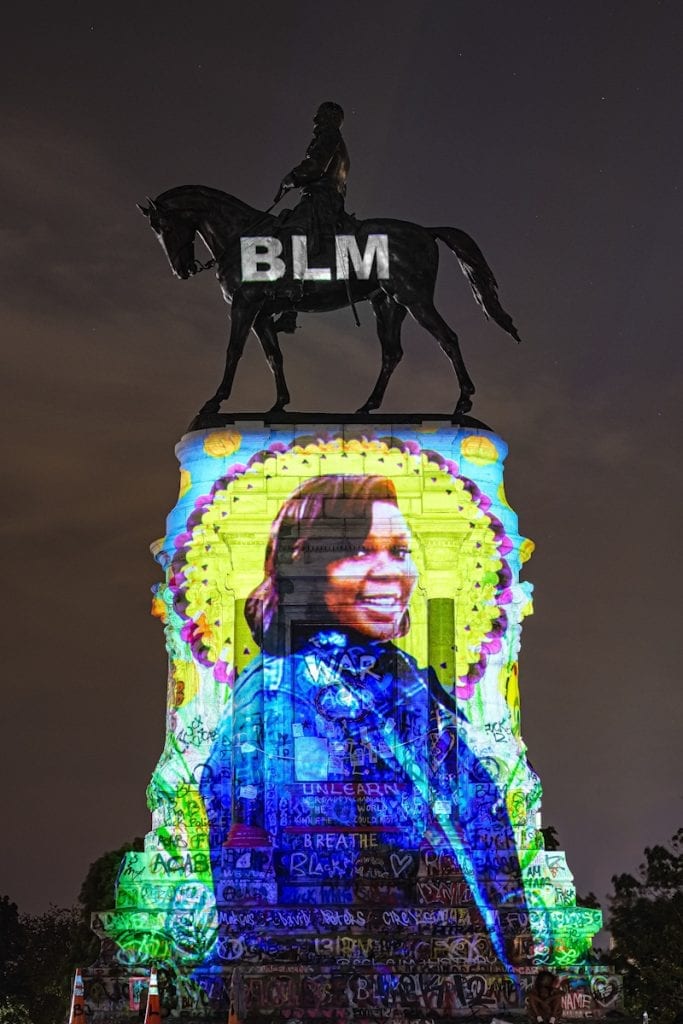
What was the creative thought process behind doing projections at Marcus-David Peters Circle?
Dustin: In a lot of ways, I view the monument as a portal of intended negative energy that still resonates. When I saw the initial tagging, it felt as if the tagging helped eliminate some of the negative energy with proper contextualization. The tagging only traveled up the monument partially since it’s six stories high. I knew I could walk out with a projector and continue messages where other protestors physically had not been able to access with ease. Once the images went somewhat viral, we felt a responsibility to keep coming back and providing light on the monument. Every day we started developing new content and experimenting with new images and concepts to integrate into the projections.
Alex: The projections started as a way to bring visibility to victims of police violence and to amplify the messages and voices that were coming out of the movement that we were experiencing. It seemed like a way we could contribute that was unique to us, and felt like an appropriate way to do something that didn’t overshadow other voices that needed to have center-stage. Over time, it evolved into a reclamation that incorporated the images and voices of the pioneers of Black liberation in America. The people that laid the foundation for this movement have a strong juxtaposition with the historical nature and subject matter of the monument itself. Each day, each week, it evolved as we responded to what was happening in our city and around the nation. I think, through that process, the project has transformed from focusing on mourning and the tragedies that sparked this moment into more of a celebration of Black history, culture, life, and the special place that they hold in America. Black history and culture have really shaped so much of who we are as a people, and as a country.
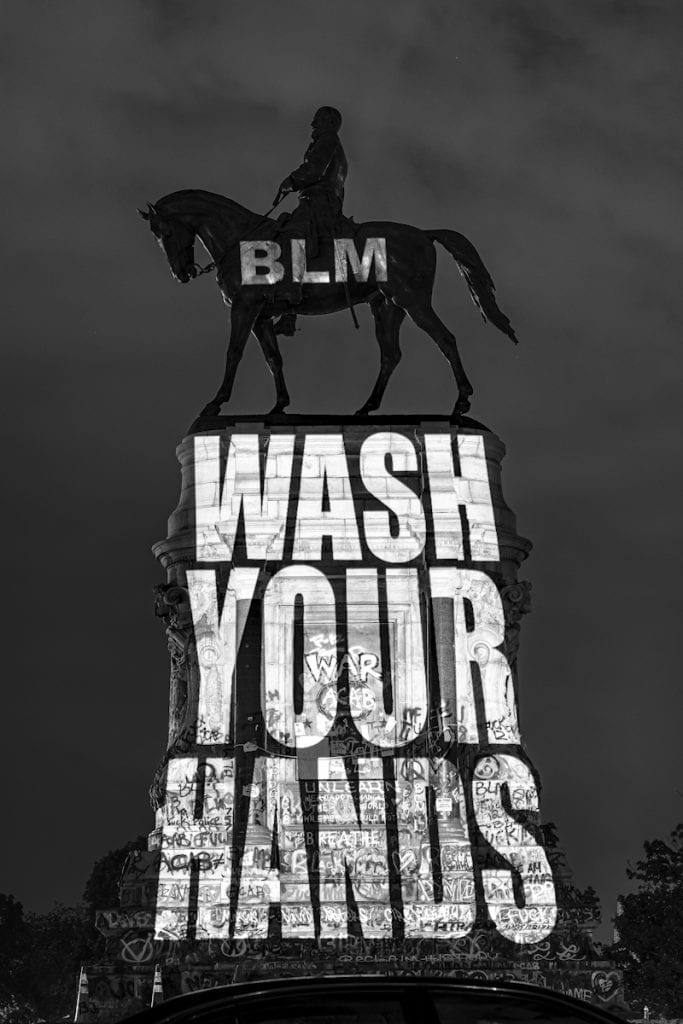
Why is this project personally important to both of you?
Dustin: This project is personally important to me because police violence and racial discrimination in our country are unacceptable. Racism and white supremacy are unacceptable. All people deserve equality. I personally had the feeling that if I didn’t contribute to the protests or stand out I would be like the officers who didn’t do anything while George Floyd was murdered. Once the project morphed into something we were doing every day, I started appreciating the way that both the projections and the Circle itself were creating a community. It was amazing to meet so many people out there and hear direct feedback on how they felt about the projections. I feel very blessed to have had the opportunity to connect with so many people in the city through this project.
Alex: I think what Dustin said largely captures my feelings about the project. Having grown up in this city, I think we both had an acute awareness of the injustice that Black people face every day, and of the historical atrocities that have been minimized and swept under the rug for far too long by these symbols. I think we both knew this wasn’t the time to stand on the sidelines, and that feeling drove us to do something out of the ordinary. The first few nights of the protests before we started this project, I experienced some really shocking police violence and that was personally a catalyst for me to go all-in on committing myself towards this movement. The response from the community just reinforced that notion, that we were doing something right and positive through our work, so we stuck at it. In many ways, this project has seemed to bring about some sort of healing and catharsis for people who see it. In some ways, it has taken some of the power back from these symbols and put it in the hands of the very people they were built to oppress. I think the magnitude of that made us realize that what we were part of something far bigger than the two of us, which, I think, is really what drove us to be out there for so long.
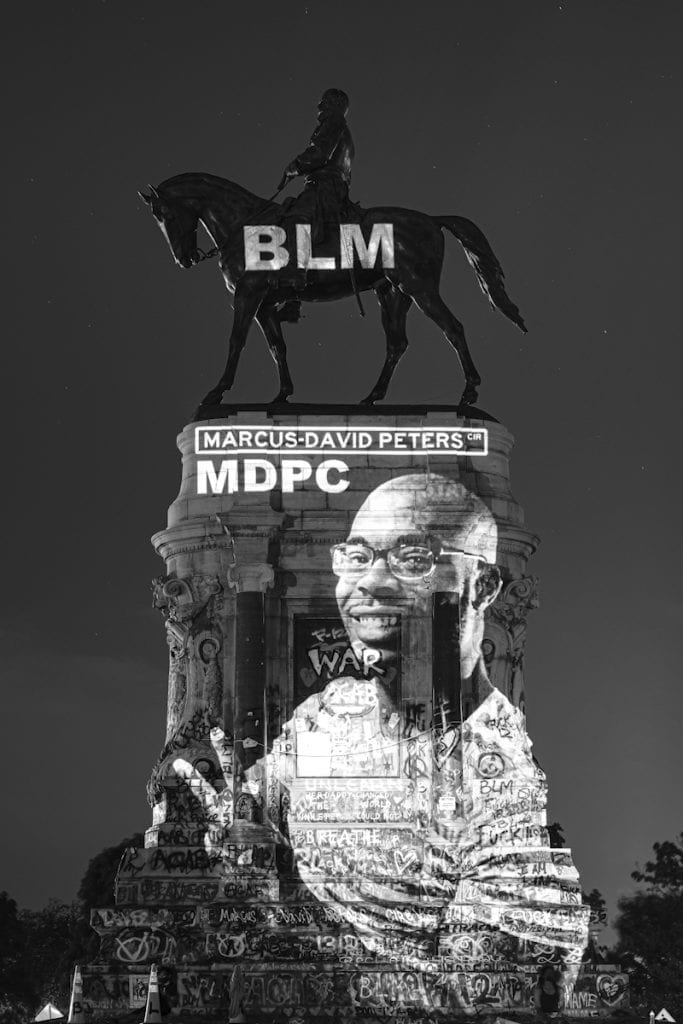
Creatively, how does the team come up with the visuals?
Alex: Initially we were working off of a graphic we got from the Black Lives Matter website – showing victims of police violence which really was the jumping-off point of our creative process. The graphic helped in establishing the look and feel of what we have been doing and we dialed-in from there. Once we landed on the giant George Floyd face, everything seemed to come together in terms of where we could take it visually. I studied history in college, so as the project evolved we started incorporating voices from the past like Frederick Douglass, W.E.B DuBois, and Ida B. Wells into our work. Adding those historical images and voices gave the project a whole new dimension. Eventually, that led to playing speeches and interviews, along with music and art. We usually just bounce ideas off of each other to find the middle ground between our different viewpoints. Dustin has a lot of strengths that I don’t have, and I have different qualities that I bring that are unique. I think that through working with each other we are able to find a nice balance in our approach and how to respond to the different things that are happening around us.
“In some ways, (this project) has taken some of the power back from these symbols and put it in the hands of the very people they were built to oppress.”
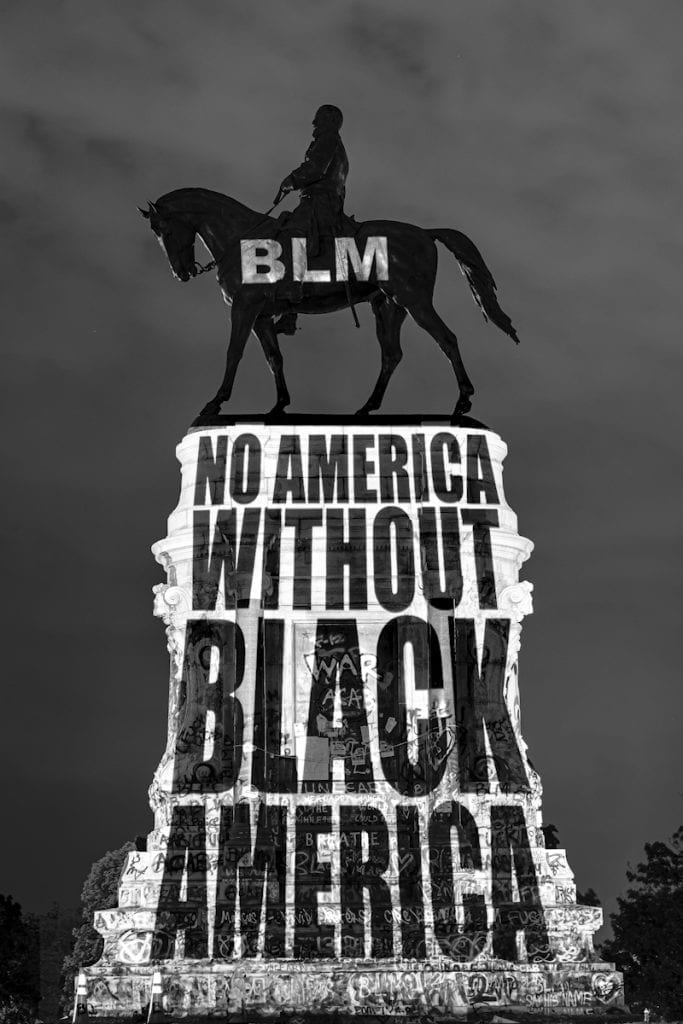
Are you two the only team doing the projections at the Circle?
Dustin: As far as I know, other than Moe and Bryan, we are the only team actually projecting on the monument. I know George Floyd’s family came through for one night with an installation in front of the monument, but not actually on it. There was also a documentary called WeAReRVA created about the protests movement in Richmond that was screened inside the Circle.
Alex: Our friends Moe and Bryan who have been traveling around doing protest projections in places like Florida and Portland came up for a couple of nights to work with us. That was pretty special to have another team collaborating with us: since there aren’t many people doing what we do. They got one side of the statue and we got on the other, which ended up looking pretty interesting in how it came together.
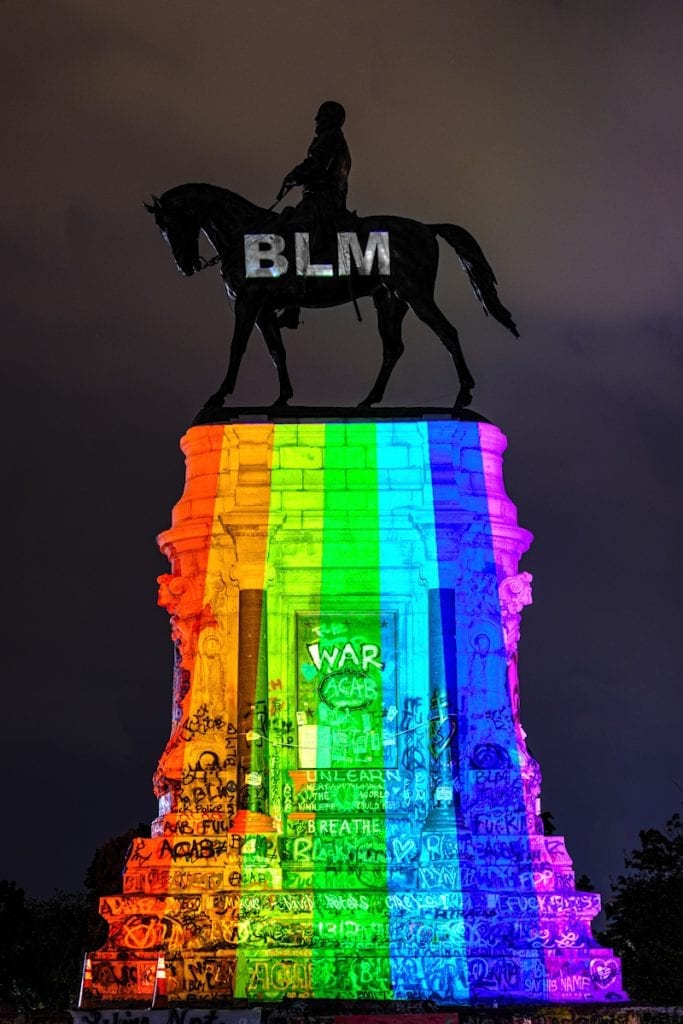
What has been some of the feedback you’ve received on the projections?
Dustin: The majority of the feedback, especially in person, has been very kind and positive. People are very appreciative of the way that something which had been perceived as a symbol of hate has been transformed and reclaimed into something that they feel is beautiful. It’s been awesome to learn about historical figures through suggestions from people in the community.
Alex: We have been really fortunate to have received mostly really positive feedback about this project from the people we have met out there. We have met people who knew some of the families of the victims of police violence that we have projected onto the monument, and to hear that their families were moved by our work was really powerful to hear. It really has affirmed our intentions to keep doing what we were doing.
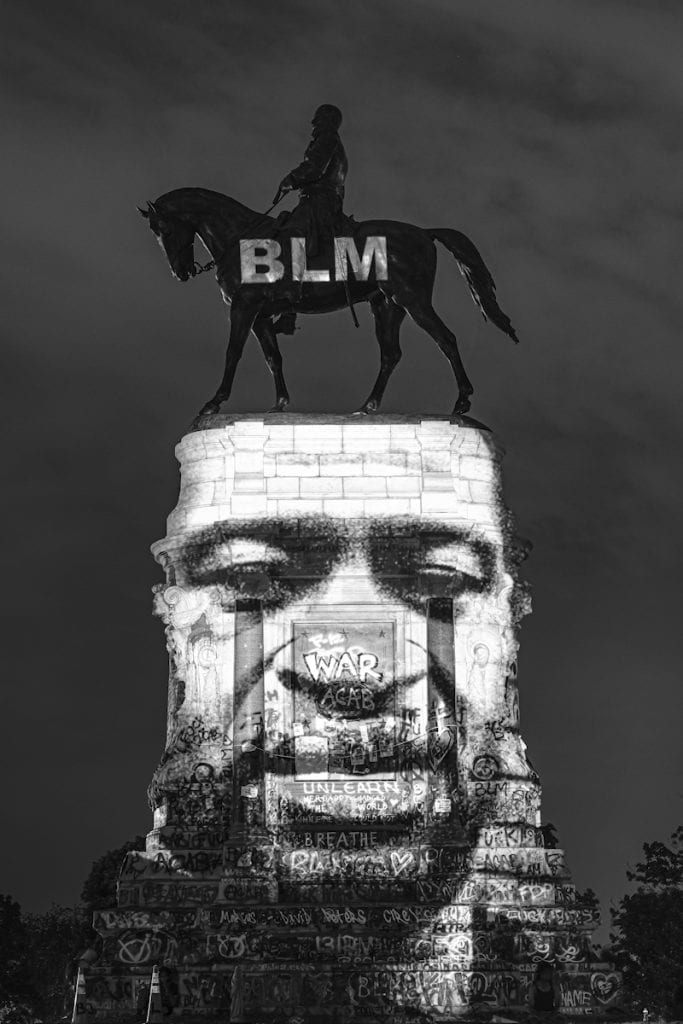
Follow Dustin Klein and Alex Criqui for the latest on the projections and the Reclaiming the Monument fundraiser. Shout out to Zach Fichter on photography. #WESEEIT


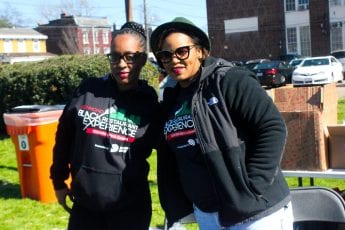
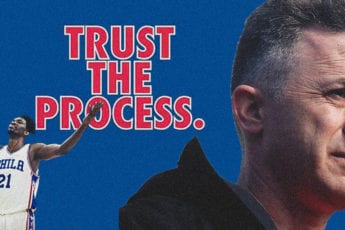
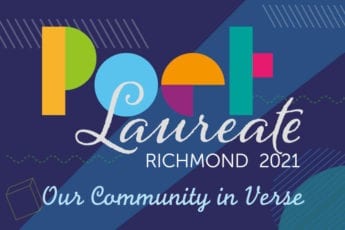

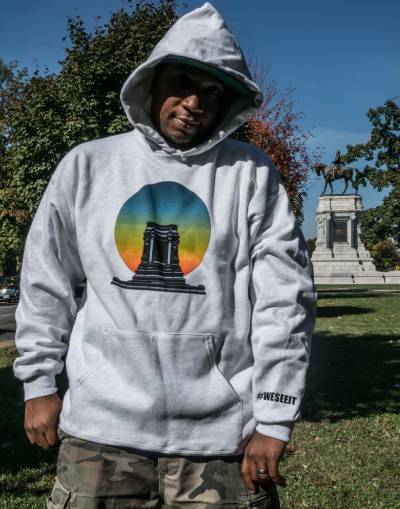 The Cheats Movement is dedicated to hip-hop culture, politics, and community activity. We see our community different than most, therefore, #WESEEIT
The Cheats Movement is dedicated to hip-hop culture, politics, and community activity. We see our community different than most, therefore, #WESEEIT
Leave a Comment